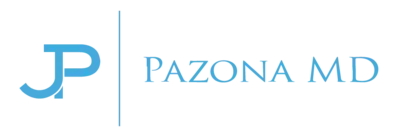
Urinary Issues in Women
Urinary incontinence is a common urinary issue for women. Solyx™ and Axonics® can help.
Fifty million Americans suffer with some form of overactive bladder (OAB) or urinary incontinence (bladder leakage). Seventy-five percent to 80% of them are women. Unfortunately, many women believe this is just part of “getting older.” It’s not.
If you're suffering from urge incontinence, fecal incontinence, urinary retention, or stress urinary incontinence, we can help. Pazona MD is proud to offer treatments that are clinically proven to help solve urinary issues in women. Solyx™ and Axonics® are both offered at our urology practice and will help you get your incontinence under control and take back your life.
Schedule An Appointment
Treatment for Urinary Issues in Women
Solyx™
Have you ever leaked urine during exercise or while laughing? This condition is called stress urinary incontinence — the involuntary loss of urine with physical activity. You shouldn't ever have to live with urinary leakage. Solyx™ is designed to treat stress urinary incontinence. The minimally invasive procedure only requires one small incision. During the procedure, a small piece of polypropylene mesh (9 cm in length) is placed under the urethra to provide additional support to reduce or eliminate leakage during physical activity. Solyx™ can help you live a normal and worry-free life!
Axonics® Therapy
Axonics® Therapy provides gentle stimulation to the nerves that control the bladder and bowel, which can restore normal control and result in symptom improvement. It is an approved treatment for patients suffering from the following:
- Overactive bladder (OAB) – the urgent need to urinate, which may result in frequent urinary and/or incontinence (leakage) episodes
- Urinary urgency frequency – the need to urinate 8 or more times a day
- Urinary urgency incontinence (UUI) – the urgent need to urinate or trouble holding urine before making it to the restroom
- Fecal (bowel) incontinence – sudden urges to pass stool and experience leakage of stool before making it to the restroom
- Non-obstructive urinary retention (UR) – the inability to empty the bladder, which results in symptoms of frequent urination or trouble urinating
- Axonics® Therapy is also indicated for patients who have failed conservative treatments, such as lifestyle changes, physical therapy, or medications.
To find out if Axonics® Therapy is right for you, Pazona MD will have you undergo a short period of therapy using a temporary system. This allows patients to experience the level of symptom relief the therapy may provide before committing to long-term therapy.
If we determine that Axonics® Therapy is right for you, you will have an outpatient procedure where the miniaturized Axonics® implant is placed just beneath the skin in the upper part of your buttock.
If you're interested in learning more about these procedures and how we can treat urinary incontinence, contact us today!
Contact Us



